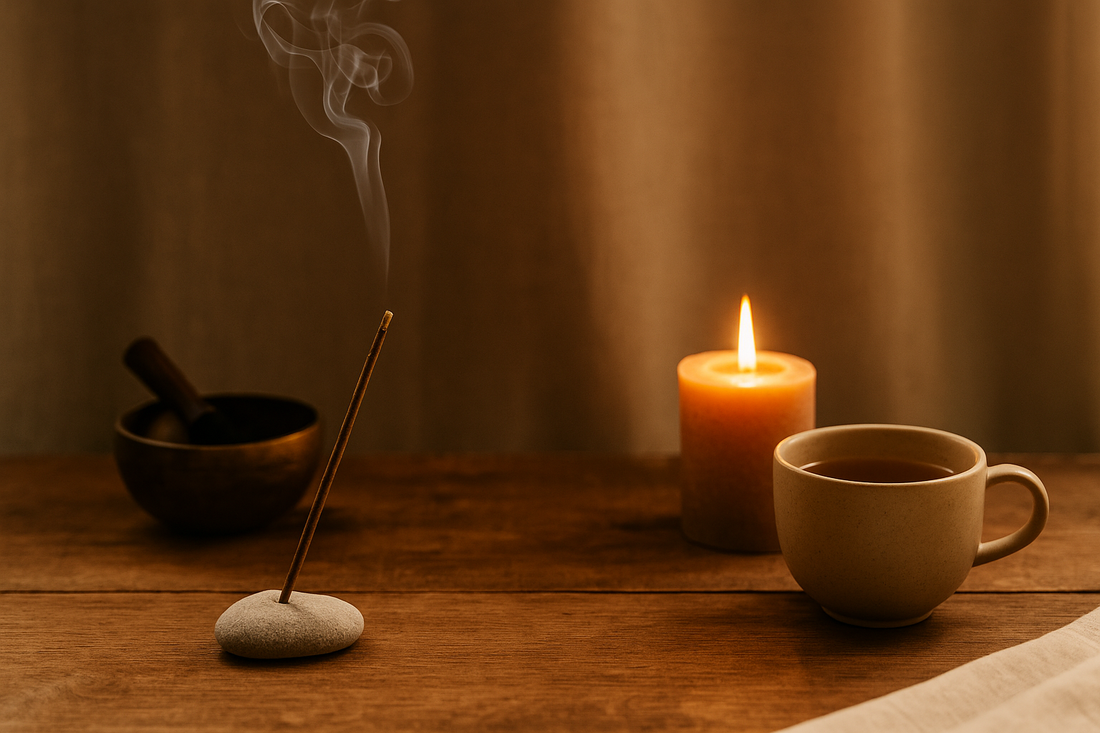
Building a Daily Ritual for Nervous System Reset (with Incense Support)
When your nervous system is in overdrive, everything feels harder. Your breath is shallow. Your focus slips. You’re either wired or completely wiped. And yet, the modern world doesn’t slow down just because you’re dysregulated.
But what if you could create a pocket of calm—a daily ritual that trains your system to come back into balance, over and over again?

What Is Nervous System Dysregulation?
Nervous system dysregulation occurs when your body is stuck in either a fight/flight (sympathetic) state or a freeze (dorsal vagal) state. It’s linked to chronic stress, trauma, burnout, and even gut issues. Common symptoms include:
- Racing thoughts or trouble focusing
- Insomnia
- Muscle tension or pain
- Digestive issues
- Emotional numbness or hypersensitivity
Regulating the nervous system involves activating the parasympathetic branch—sometimes called the "rest and digest" system. This allows your body to return to homeostasis.

The Role of Ritual in Regulation
Modern neuroscience agrees with what traditional medicine has known for centuries: consistent sensory input (especially scent, sound, and breath) can help bring the nervous system back into regulation. Rituals provide:
- Predictability and structure for the brain
- Anchoring sensory cues
- Safe, repetitive actions that cue relaxation
Think of it like training a muscle—except you’re training your vagus nerve to recognize peace.

How Incense Plays a Role
Incense has been used for centuries in Tibetan medicine to calm the spirit, release wind imbalance, and stabilize scattered qi. The ingredients in certain traditional blends have mild sedative effects, anti-inflammatory benefits, and neuroregulatory properties.
Our Chomolung Snow incense, for example, contains high-altitude herbs like Tibetan spikenard, known in both Tibetan and Ayurvedic systems to slow breath and calm the mind. Another option, Nimu Village, is a grounding blend that helps bring people out of dissociation and back into their bodies.

Step-by-Step Nervous System Reset Ritual
-
Choose a Time Daily (ideally morning or evening)
Your nervous system responds to rhythm. Anchoring the ritual to a specific time builds long-term effects.
-
Prepare Your Space
Light your chosen incense. Dim lights. Play gentle music or sound bowl frequencies. Sit in stillness for 2 minutes as the scent fills the room.
-
Engage in Slow Breathwork
Use box breathing (inhale 4, hold 4, exhale 4, hold 4) for 3–5 minutes. This activates the vagus nerve and downregulates your system.
-
Body Reconnection
Try gentle tapping (EFT), self-massage, or simply place one hand on your heart and one on your belly. Speak a phrase aloud like: “I am safe in this moment.”
-
Close with a Sensory Anchor
Blow out the incense, take one last inhale, and gently stretch. End with a cup of tea or a few drops of calming tincture to mark closure.

What the Science Says
Modern studies show that olfactory input directly influences the limbic system—our emotional regulation center—bypassing the cognitive brain entirely. This is why scent is so powerful for trauma-informed care and anxiety management.
In a 2022 review published in Frontiers in Neuroscience, researchers noted that aromatic herbs such as nardostachys (spikenard), sandalwood, and nutmeg have sedative and neuroprotective effects. These are all commonly found in traditional Tibetan incense.

Products That Work Well in This Ritual
- Chomolung Snow — calming, snowy, piney scent that slows thoughts
- Nimu Village — grounding and stabilizing for people who feel untethered
If you’re unsure which incense to start with, try our All-in-One Box to build your daily ritual from a place of curiosity and exploration.
Explore these incense blends here → Lhasa Remedy Incense

Final Thoughts
Daily rituals don’t need to be dramatic to be effective. Sometimes the simplest routines—when done with intention and consistency—can change your entire system.
By pairing breath, scent, and attention, you’re not just managing stress—you’re rewiring your baseline.

